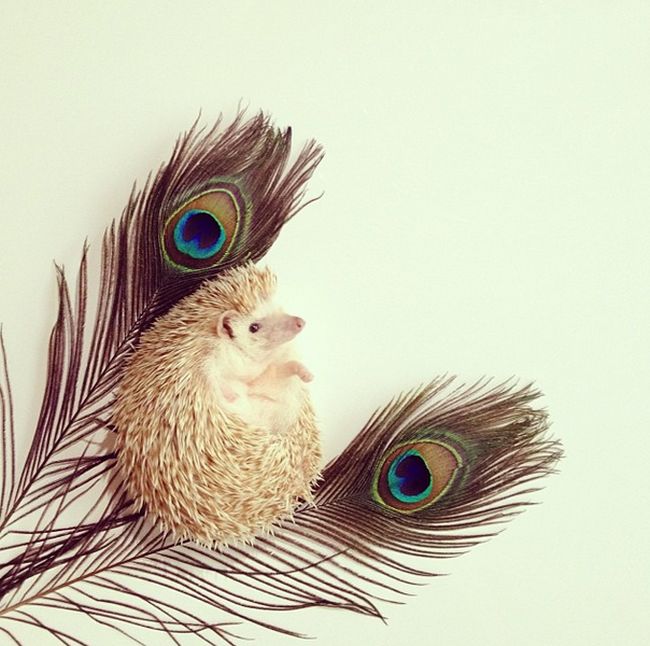|
|
Darcy The Cute Hedgehog
|
Hedgehogs are easily recognized by their spines, which are hollow hairs made stiff with keratin. Their spines are not poisonous or barbed and, unlike the quills of a porcupine, cannot easily be removed from the hedgehog. However, spines normally come out when a hedgehog sheds baby spines and replaces them with adult spines. This is called "quilling." When under extreme stress or during sickness, a hedgehog can also lose spines.
A defense that all species of hedgehogs possess is the ability to roll into a tight ball, causing all of the spines to point outwards. However, its effectiveness depends on the number of spines, and since some of the desert hedgehogs evolved to carry less weight, they are much more likely to try to run away and sometimes even attack the intruder, trying to ram into the intruder with its spines, and rolling as a last resort. This results in a different number of predators for different species: while forest hedgehogs have relatively few, primarily birds (especially owls) and ferrets, smaller species like the Long-eared Hedgehog are preyed on by foxes, wolves and mongooses.
Hedgehogs are primarily nocturnal, although, depending on the species, they may be more or less active during the day. The hedgehog sleeps for a large portion of the daytime either under cover of bush, grass, rock or in a hole in the ground. Again, different species can have slightly different habits, but in general hedgehogs dig dens for shelter. All wild hedgehogs can hibernate, although not all do; hibernation depends on temperature, species, and abundance of food.
The hedgehog's back is made up of two large muscles, which control the positioning of its quills. There are about 5,000 to 6,500 quills on the average hedgehog, and these are durable on the outside, while being filled with air pockets on the inside. The hedgehog uses its quills to protect itself from predators, using muscles which draw their quilled skin to cover their full body, and pulling in the parts of their bodies not covered, such as their head, feet, and belly. This form of defense is the hedgehog's most successful, but is usually their last resort.
|
|









